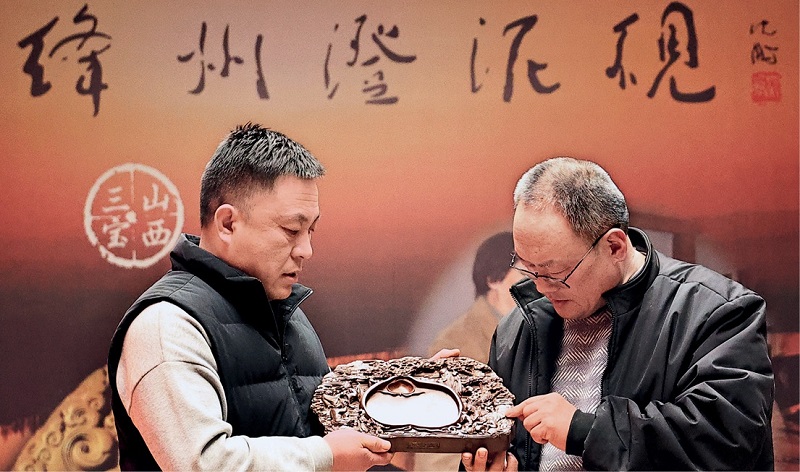
Chengni inkstone master Lin Tao (right) checks an inkstone before delivery. His father Lin Yongmao revived the dying craft.
Chengni inkstone has long been recognized as one of China’s most prominent types of inkstones, and those made in Jiangzhou, now Xinjiang County in Shanxi Province, are the most representative. Making the Jiangzhou Chengni inkstone began in the Western Han Dynasty (206 B.C.-8 A.D.). Over time, this craft developed and reached its peak during the Tang (618-907) and Song (960-1276) dynasties. Before its popularity waned during the Qing Dynasty (1644-1911), it used to be given as a tribute to the imperial court.
The key material used in making Jiangzhou Chengni inkstones is silt collected from the Fenhe River. The production process takes around a year and involves over a dozen steps, ranging from collecting silt and filtering clay to molding, firing, and carving. Among all the steps, selection of raw material and firing are the most crucial. Once fired, each inkstone is left in the kiln to cool down naturally for half a month before being taken out. However, only 30 percent are successfully completed, making them rare and highly valuable.
The Chengni inkstone is uniquely cold-resistant and impermeable and known for its smooth and firm texture which does not damage brush hairs. This inkstone comes in various colors, including highly sought-after colors like yellow, green, rose purple, and cinnabar red.
This traditional craft disappeared for a time but then was revived and further developed thanks to the dedication of three generations of artisans from a family—Lin Yongmao, his son Lin Tao, and grandson Lin Xiaolin. In 2008, the crafting technique of the Chengni inkstone was officially added to China’s list of national intangible cultural heritage items.
Today, inheritors are collaborating with universities to make the Chengni inkstone, and also incorporate modern elements to increase its appeal to younger generations. To better preserve this craft and attract public interest, Jiangzhou established a Jiangzhou Chengni Inkstone Cultural Park which conducts cultural exchanges, exhibitions, crafting experiences, and tourism. All these efforts are attracting more people to learn about and appreciate the charm of the Chengni inkstone.